Business Planning to drive performance
Abacum is the FP&A platform that balances flexibility with ease of use and gets implemented in weeks, not months.
4.8 / 5.0
Business Planning to drive performance
Abacum is the FP&A platform that balances flexibility with ease of use and gets implemented in weeks, not months.
4.8 / 5.0
Business Planning to drive performance
Abacum is the FP&A platform that balances flexibility with ease of use and gets implemented in weeks, not months.
4.8 / 5.0
Collaboratively set targets and plan for any scenario.


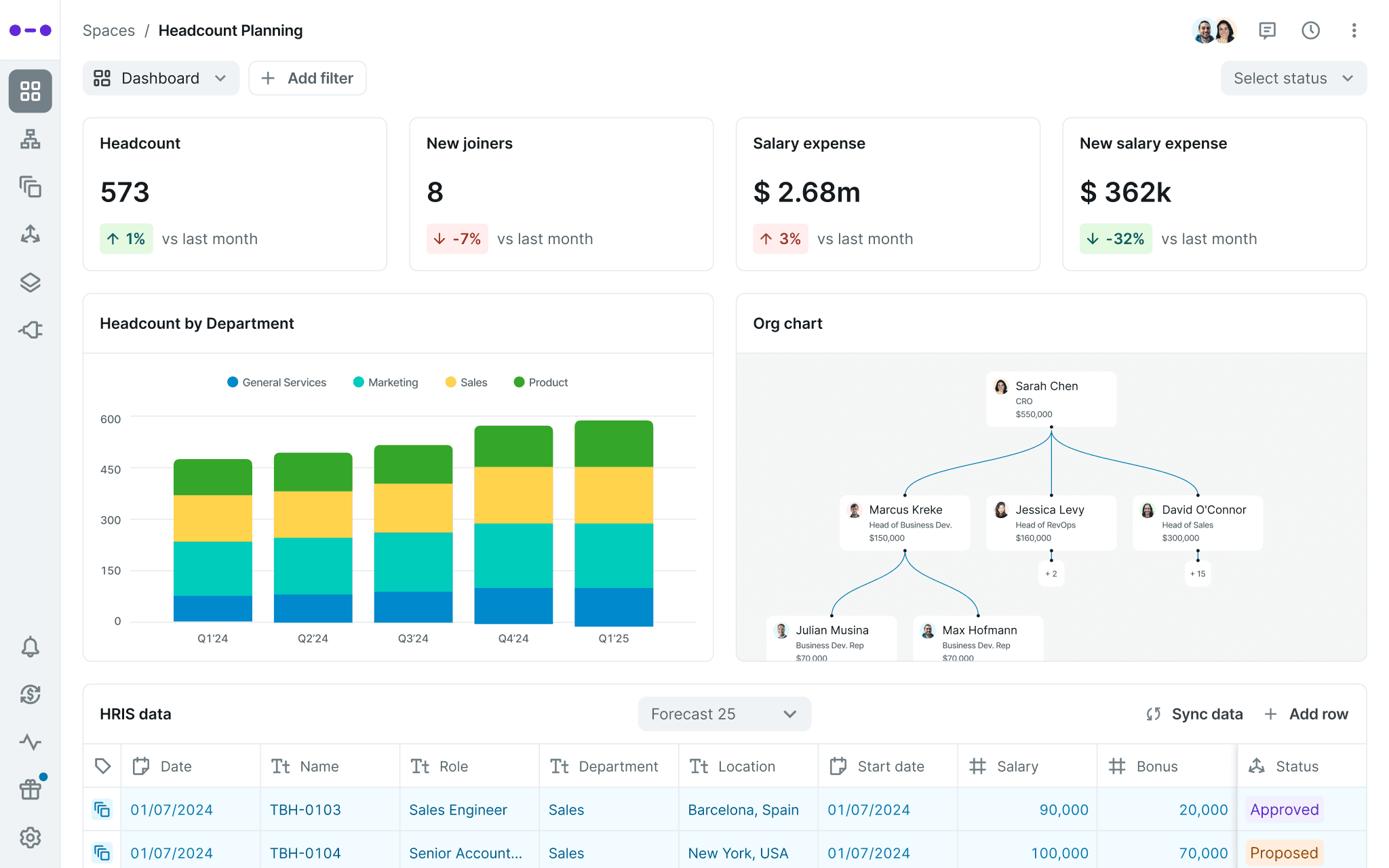

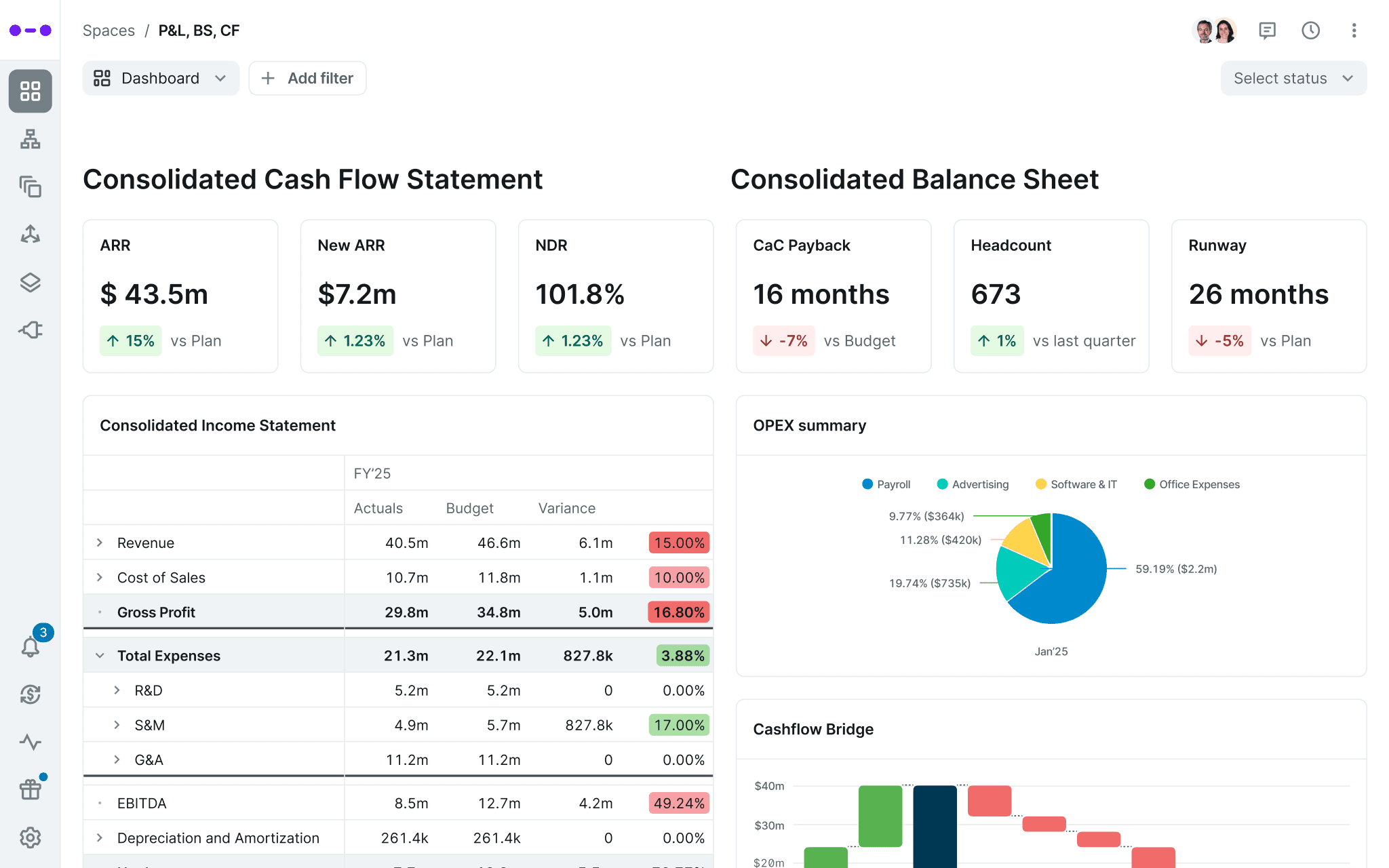
Turning finance teams into strategic drivers
Hundreds of finance teams make smarter decisions with Abacum
Turning finance teams into strategic drivers
Hundreds of finance teams make smarter decisions with Abacum
Turning finance teams into strategic drivers
Hundreds of finance teams make smarter decisions with Abacum
Surface insights that will move the needle
Access real-time financial and operational reports, easily filter and compare against targets, and share the insights you didn’t have the time for.
Dashboards
Templates
Reporting workflows
Custom visualizations
Slack integration
PDF and Slides export
Drill-down
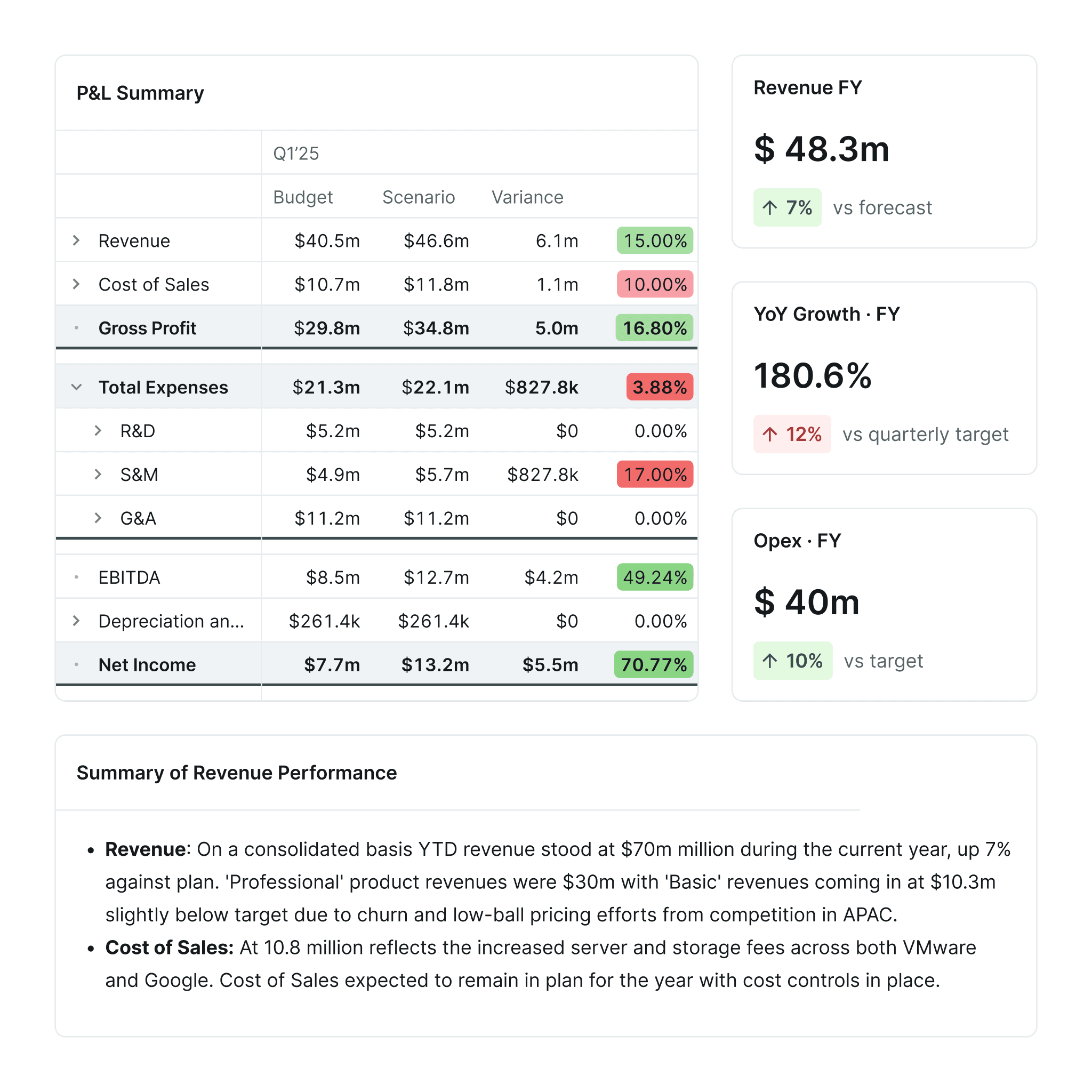
Surface insights that will move the needle
Access real-time financial and operational reports, easily filter and compare against targets, and share the insights you didn’t have the time for.
Dashboards
Templates
Reporting workflows
Custom visualizations
Slack integration
PDF and Slides export
Drill-down

Surface insights that will move the needle
Access real-time financial and operational reports, easily filter and compare against targets, and share the insights you didn’t have the time for.
Dashboards
Templates
Reporting workflows
Custom visualizations
Slack integration
PDF and Slides export
Drill-down

Make plans that drive business performance
With collaborative workflows, forecast templates, approval requests, and what-if scenario planning, Abacum turns planning into a team sport.
Connected scenarios
Custom metrics
Auto-complete formulas
Approvals
Permissions
Budgeting workflows
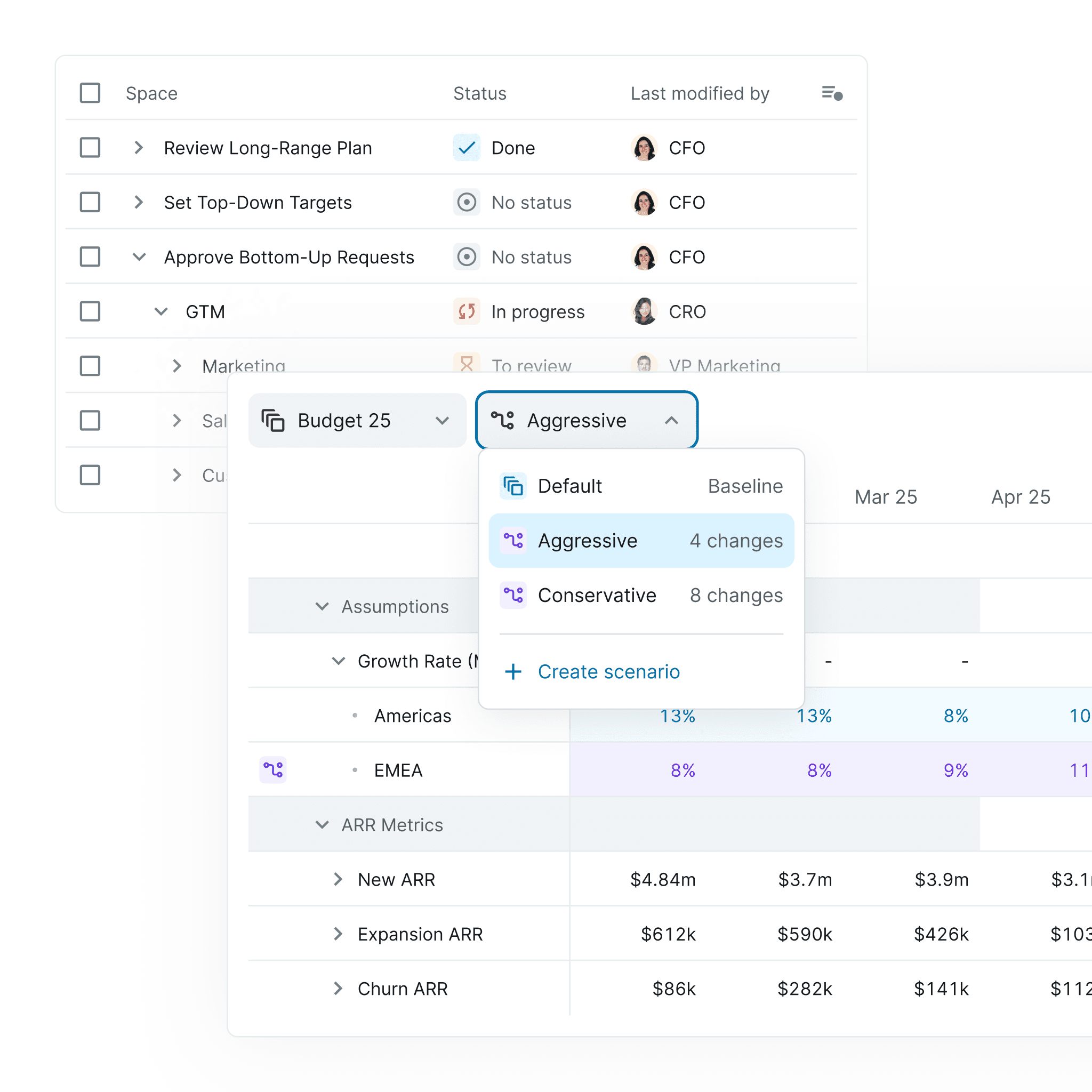
Make plans that drive business performance
With collaborative workflows, forecast templates, approval requests, and what-if scenario planning, Abacum turns planning into a team sport.
Connected scenarios
Custom metrics
Auto-complete formulas
Approvals
Permissions
Budgeting workflows

Make plans that drive business performance
With collaborative workflows, forecast templates, approval requests, and what-if scenario planning, Abacum turns planning into a team sport.
Connected scenarios
Custom metrics
Auto-complete formulas
Approvals
Permissions
Budgeting workflows

Abacum Intelligence becomes your next hire
Built for finance teams, Abacum Intelligence understands your performance, creates intelligent forecasts, and keeps you always one step ahead.
AI Forecasting
AI Summaries
AI Classifier
AI Anomaly Detection
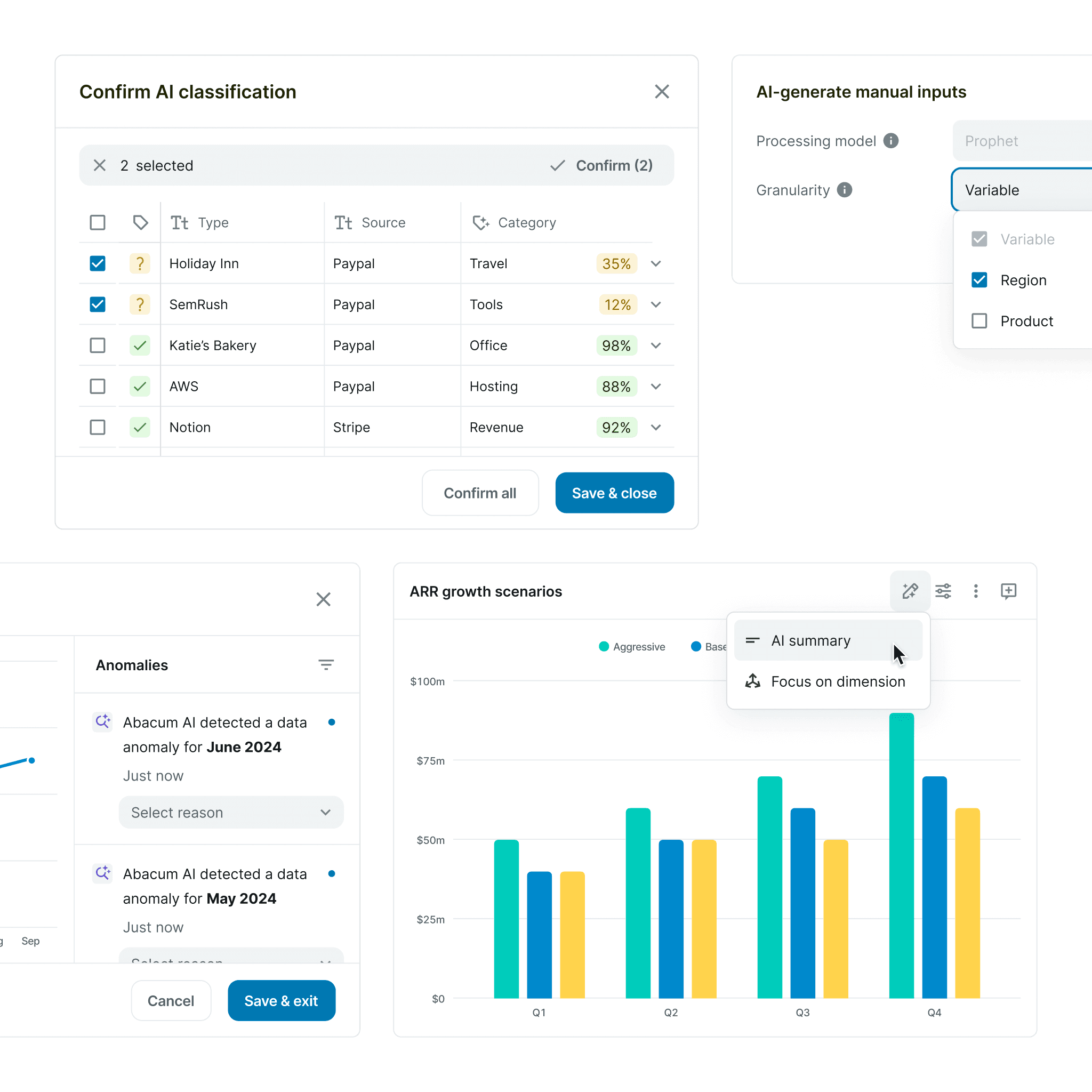
Abacum Intelligence becomes your next hire
Built for finance teams, Abacum Intelligence understands your performance, creates intelligent forecasts, and keeps you always one step ahead.
AI Forecasting
AI Summaries
AI Classifier
AI Anomaly Detection

Abacum Intelligence becomes your next hire
Built for finance teams, Abacum Intelligence understands your performance, creates intelligent forecasts, and keeps you always one step ahead.
AI Forecasting
AI Summaries
AI Classifier
AI Anomaly Detection

Data is never too messy to be synced into Abacum
Finally create your metric source of truth and keep your reports in real-time. With 50+ integrations, connect to any system, aggregate, and clean your data—no more manual CSV handling.
Data Transformations
FX translations
Manual adjustments
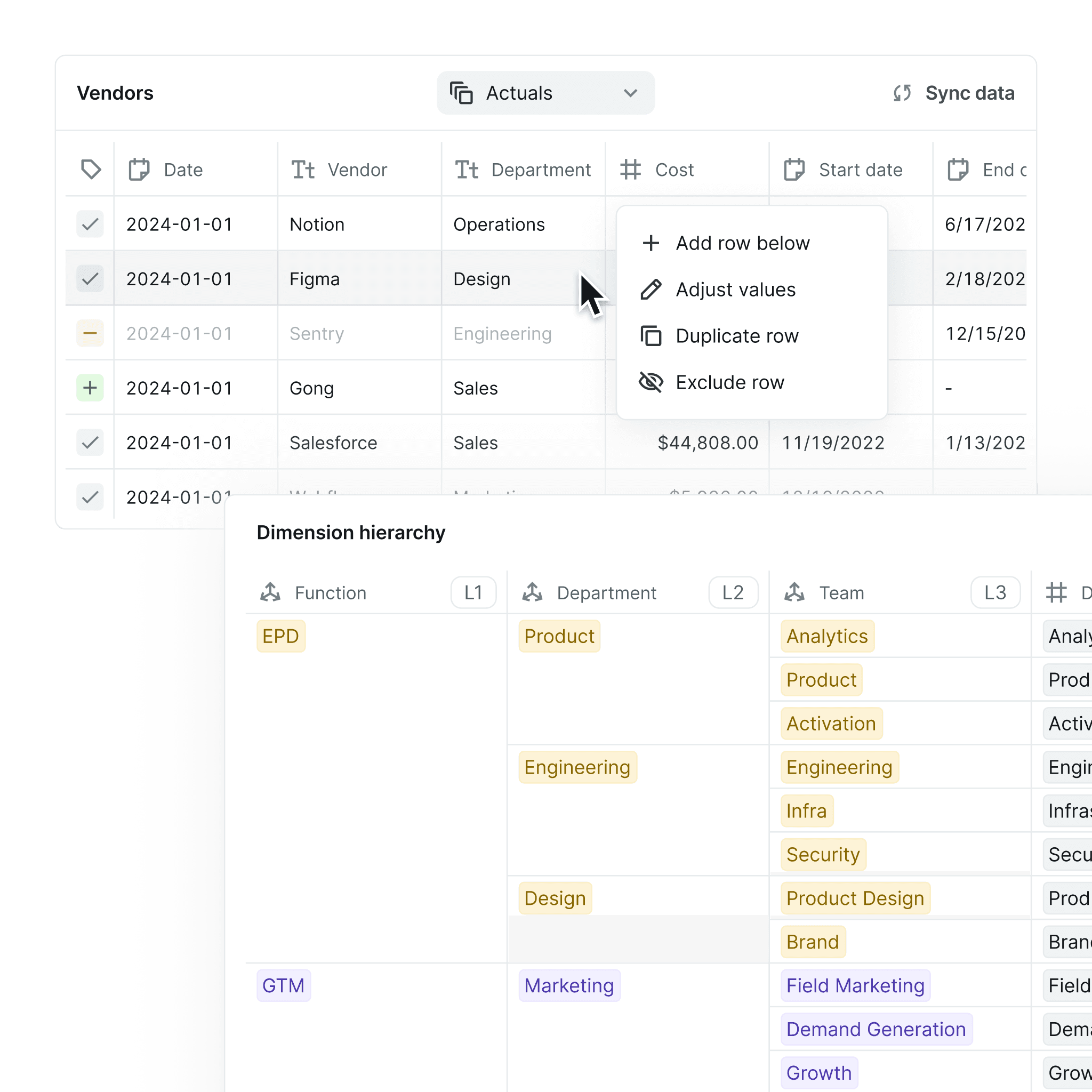
Data is never too messy to be synced into Abacum
Finally create your metric source of truth and keep your reports in real-time. With 50+ integrations, connect to any system, aggregate, and clean your data—no more manual CSV handling.
Data Transformations
FX translations
Manual adjustments

Data is never too messy to be synced into Abacum
Finally create your metric source of truth and keep your reports in real-time. With 50+ integrations, connect to any system, aggregate, and clean your data—no more manual CSV handling.
Data Transformations
FX translations
Manual adjustments

Integrate your
|
Tableau
Stripe
Snowflake
SFTP
Salesforce
Looker
Amazon S3
BigQuery
Chargebee
Google Drive
Google Sheets
Hubspot
Integrate your
|
Tableau
Stripe
Snowflake
SFTP
Salesforce
Looker
Amazon S3
BigQuery
Chargebee
Google Drive
Google Sheets
Hubspot
Integrate your
|
Tableau
Stripe
Snowflake
SFTP
Salesforce
Looker
Amazon S3
BigQuery
Chargebee
Google Drive
Google Sheets
Hubspot
For all the decisions you need to make.
4.8 / 5.0
For all the decisions you need to make.
4.8 / 5.0
For all the decisions you need to make.
4.8 / 5.0
FP&A that drives business performance
4.8 / 5.0

SOC 2 Type II certified
FP&A that drives business performance
4.8 / 5.0

SOC 2 Type II certified
FP&A that drives business performance
4.8 / 5.0

SOC 2 Type II certified


























































